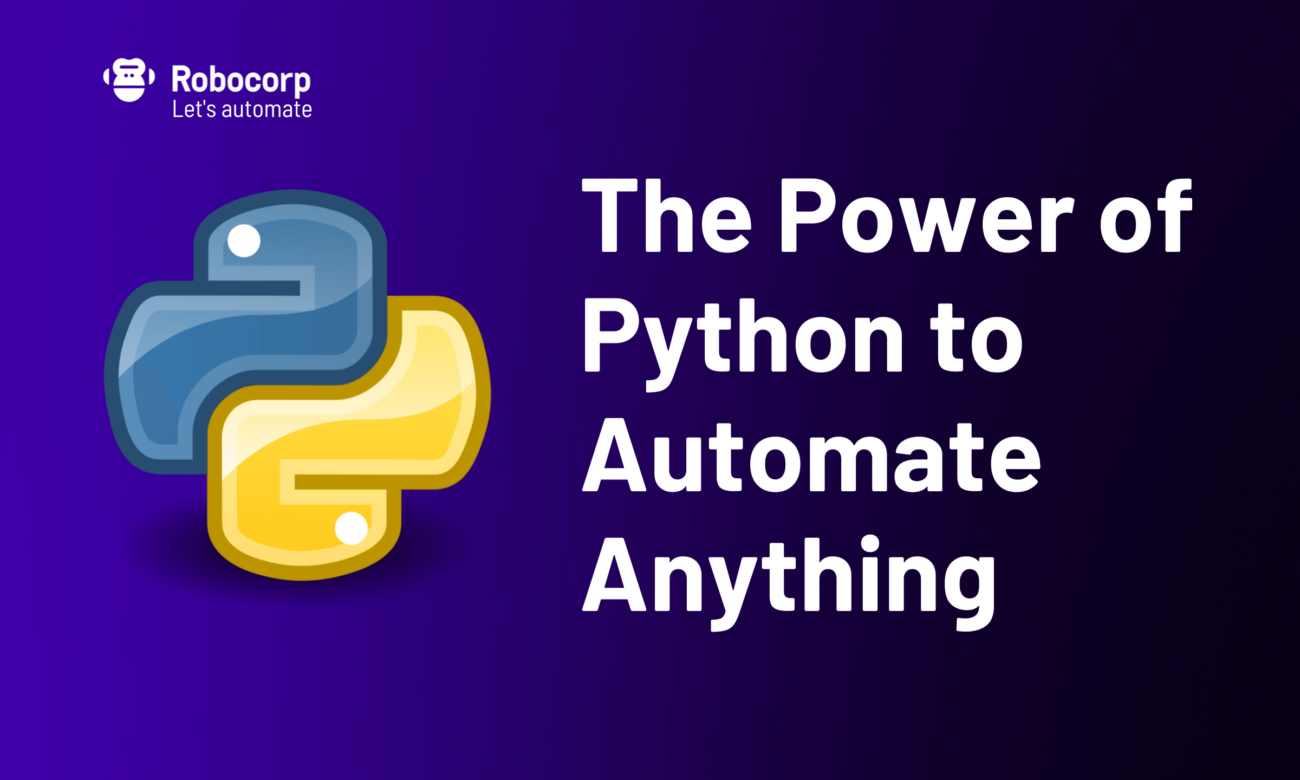The Power of Python to Automate Anything
Open-source Gen2 RPA helps you break free from limitations that stand between you and your automation goals.

Key Takeaways:
- Python-based RPA is the world’s most powerful, flexible, stable, and affordable approach to end-to-end enterprise automation. It is the easiest to maintain and drives the highest ROI.
- Python is the native language of automation and artificial intelligence. It connects to anything and hyperautomates everything.
- Apache 2.0 licensing means your bots are portable and can run forever without a vendor forking the code.
As more and more companies use robotic process automation (RPA), some are hitting roadblocks. During 2021, RPA usage grew by 31% — and that number isn’t slowing down anytime soon. Double-digit growth is expected to continue through 2023. Adoption was fueled by the promise of faster speed, fewer human errors, and significant savings, but the limited capabilities of traditional RPA are leaving important benefits, like flexibility, on the table.
Enterprises are discovering that proprietary RPA providers, like the “RPA Big 3” (UiPath, Blue Prism, and Automation Anywhere), offer automation options that work well for certain use cases, but can’t always automate really complex business processes – especially when it comes to legacy technologies. They also tend to cause burdensome maintenance overhead to keep the bots up and running – essentially shifting employees from process execution to process monitoring.
What RPA solution is right for you?
Organizations that implement successful automation programs start with a roadmap to guide their decision-making. It helps tie strategy to tactical efforts. This starts by asking several questions:
- What is the reasoning behind automating?
- What are your long-term goals?
- What processes do you want to automate, and to what extent?
- What are the underlying technologies connected to your processes?
- What are your budget and timeline?
Savvy teams should also consider potential requirements around hyperautomation and the adoption of artificial intelligence and machine learning tools. Your RPA solution should be flexible enough to accommodate current automation needs as well as future hyperautomation aspirations.
Since organizations often use a mixture of old and new technologies, you need tools to integrate them easily. If you don’t, you risk silos and disconnects, which means you aren’t getting all you can from your RPA investment. Worse yet, you risk increasing the complexity of your IT stack, which can create compounded issues down the road.
Traditional RPA vendors arm enterprises with drag-and-drop visual development tools, which might seem positive, but lack the depth required to get the most from your automation projects. Additionally, missing programming options limit the potential impact of the technology itself.
Once you’ve considered these items, you’ll be in a better position to select the right RPA technology for your organization’s objectives. Many RPA customers are realizing that a multi-vendor strategy is the best way to meet their end-to-end automation needs. Teams that choose a Python-based approach tend to experience the highest ROI on their RPA investment, as well as the least amount of maintenance and service disruptions.
Adding open-source Gen2 RPA to your toolbox.

Open-source RPA, also known as “Gen2 RPA,” uses the Python programming language and Robot Framework, providing you with a powerful and flexible way to “glue” together various enterprise applications and conduct business without disrupting core legacy systems or existing RPA workflows. That means you don’t need to start from scratch; you can use and enhance much of what you have in place. Built-in data structures, combined with dynamic typing and binding, make Python attractive for use as a scripting or glue language to connect your existing components.
Additionally, open-source Gen2 RPA gives you a programmatic approach to hyperautomation. It works deeper within application layers, beyond the UI, using locators, X-Path, and other technologies to ensure your data flows accurately. This reduces the maintenance burden of keeping automations up and running and decreases the risk of broken bots. Lowering this risk is significant since teams using older technology report dedicating 25% of their resources to fixing broken bots.
Gen2 automation helps you easily spot and fix problems using AutomationOps best practices and advanced logging that tracks everything happening with users, bot code execution, and process steps. Developers have a composable way to create, reuse and extend automation through centralized libraries and keywords. As a result, you eliminate the time-consuming process of rebuilding functions that are inherent in traditional Gen1 drag-and-drop RPA solutions, which speeds up development times. As a bonus, Apache 2.0 licensing means your bots are portable and can run forever without a vendor forking the code.
Realizing the full potential of automation.

As your business changes and grows, you need tools that will support that growth rather than hold you back. Traditional RPA has limitations that get in the way of fully realizing your automation goals. But when you leverage Python automation, you can capture the agility, flexibility, and durability required to speed up automation, save time, and improve mission-critical business processes that support your growth.
Robocorp is the leader in open-source Gen2 RPA – with hundreds of customers – from Fortune 500 enterprises to start-ups – that are augmenting or replacing UiPath, Blue Prism, Automation Anywhere – or simply want to start their automation journey with a more modern platform. Let us show you how the next generation of RPA far exceeds the capabilities of traditional automation providers at a fraction of the cost.
Visit https://robocorp.com/talk-to-sales to learn more.